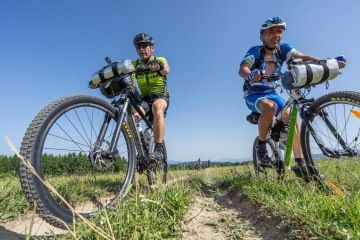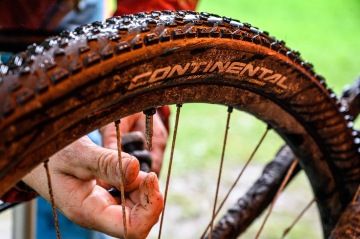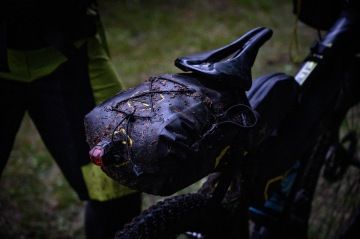BIKE, TIRES, SADDLE ...
What kind of bike to take to the Mile? Is it better hardtail or full? Which jackets to choose? Fast design for the road or prefer tractors for the field? Tubeless or soul? What about the saddle? What kind of saddle can you sit on for 15 hours a day?

BIKE
The race route leads along roads and footpaths of all types and practicability. At the same time, you ride in any weather and every competitor has to take that into account. We definitely recommend an MTB mountain bike. Gravel or hybrid bikes are not recommended for this race, however there are racers who use them.
There is a debate as to whether a hardtail is better - a bike with a sprung front fork, but with a fixed rear wheel structure - or a full (FULL MTB, full suspension) - a bike with a sprung front fork and at the same time a sprung rear structure. Racers use both types. Here are the benefits most often cited by racers:
hardtail
- lower weight,
- reduced susceptibility to mechanical problems,
- better placement of bags and drinking bottles.
full
- higher driving comfort,
- reduction of hand impacts during descents,
- more comfort for the butt.
In terms of bike quality, we recommend sport or racing class, not basic, city or touring. During the race, the bike is subjected to extreme stress such as descents on rocky roads and trails, riding in mud, riding in grass, wading in streams, being carried over fallen trees and falling. In these situations, the racer will appreciate that he can rely on his bike 100%.
We recommend that the competitor takes to the track a bike that has been tested in such extreme conditions. There are plenty of racers who don't finish the Mile simply because they didn't pay enough attention to their bike preparation, and there are plenty of racers who haven't had a single problem with their bike the entire race.

TIRES
Mílař devotes a lot of time and testing to the selection of suitable tires. It's definitely a good idea to choose from off-road racing designs. It pays to invest in stronger versions of the jackets. Experienced racers will definitely go for the faster designs because they know what to expect from the course and can better judge the speed/safety ratio.
There is a big discussion around "tubeless". Someone wants to be sure and sees the soul in the wheel as the foundation. Someone has tested the reliability of tubeless and trusts them. However, both camps always have a spare soul with them - sometimes even several souls.
A bike with light 29" rims is probably a given. Unlike the 26'', it is more stable on descents and the lower rolling resistance will be appreciated by competitors on every stony hill.

seat
If the choice of bike and tires is controversial among the Milárs, then the saddle is complete alchemy. Here, everyone has to find their best and there is no recommendation as to which brand and type to buy. Racers spend more than 15 hours a day in the saddle, and after a few days of riding you can definitely tell if you have the right saddle or not. A bad saddle and a bloody butt became the reason for many a competitor to end the race early.
If we could take an advise:
-
you have to "push" your ass
-
test the saddle, if your butt hurts after 2 hours of riding, you have a bad saddle,
-
there is no shame in having a wide saddle on the Miles,
-
don't save money on the saddle,
-
wear quality shorts
-
find a proven cream.